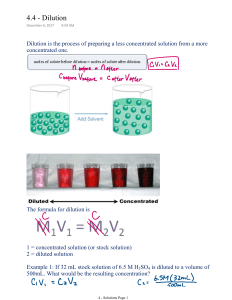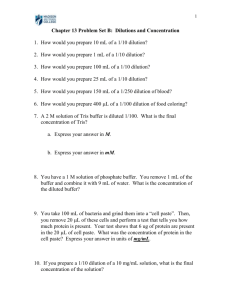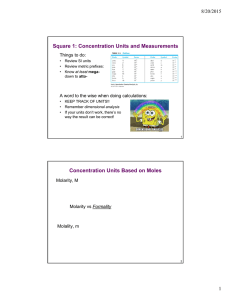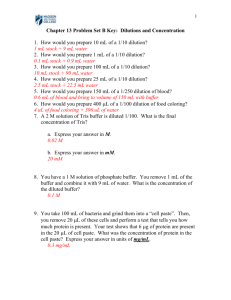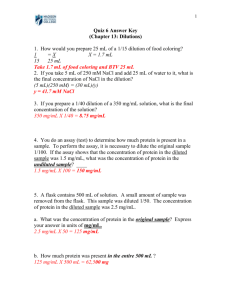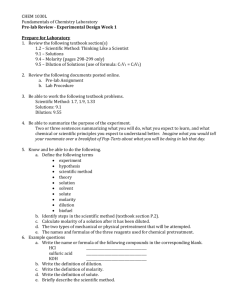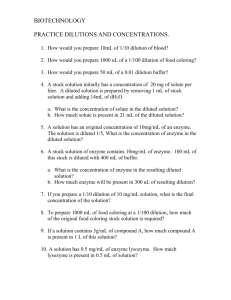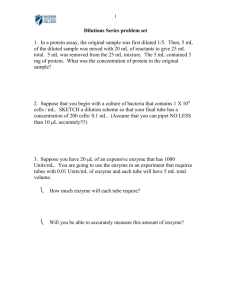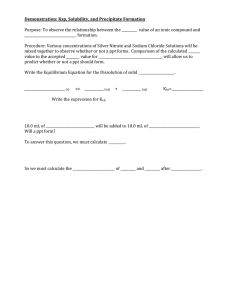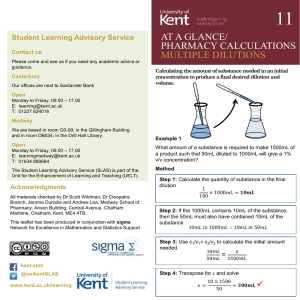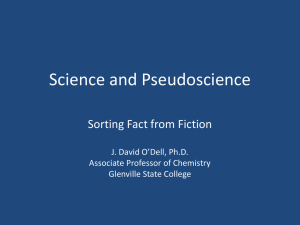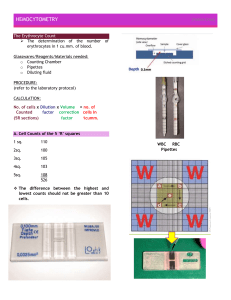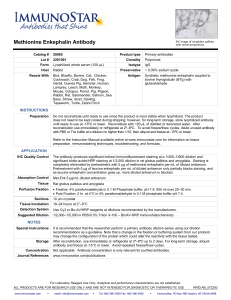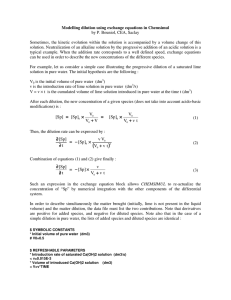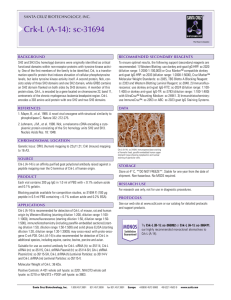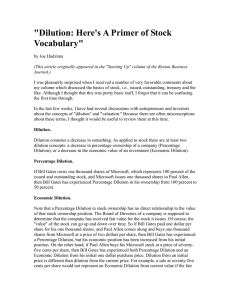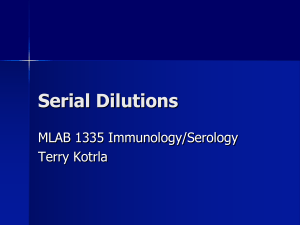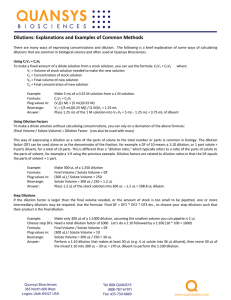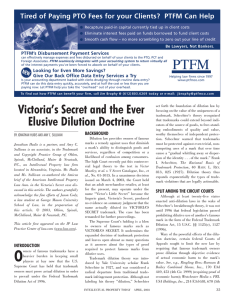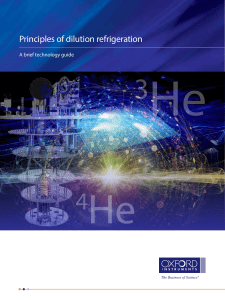Answers to Calculations Tutorial Exercises
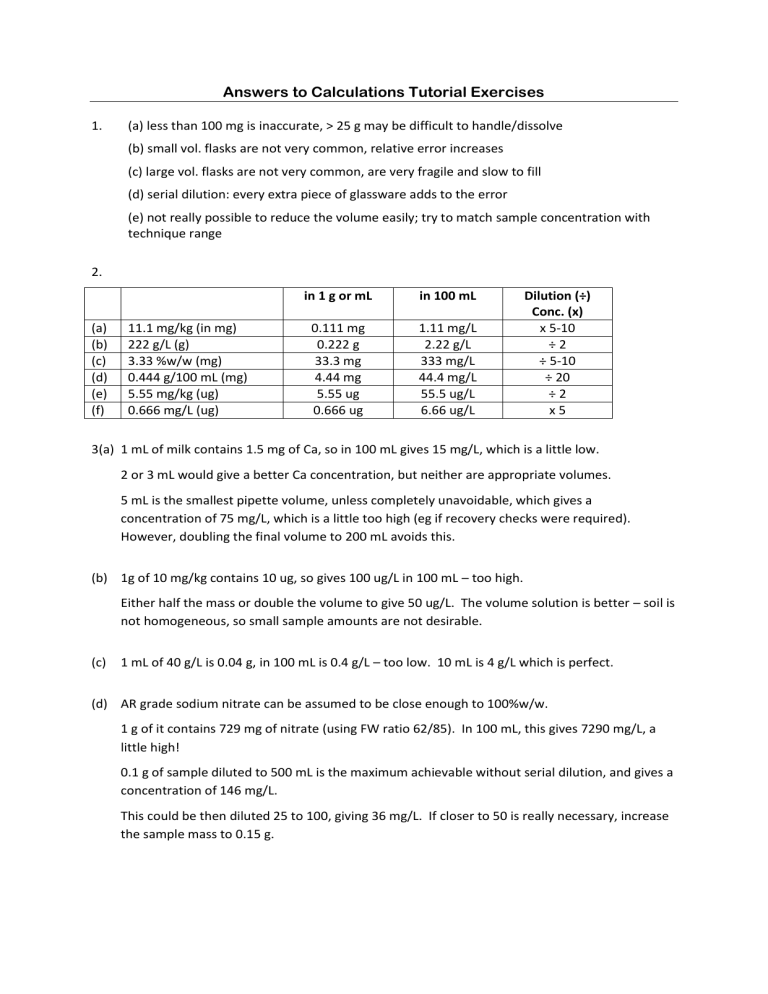
Answers to Calculations Tutorial Exercises
1. (a) less than 100 mg is inaccurate, > 25 g may be difficult to handle/dissolve
(b) small vol. flasks are not very common, relative error increases
(c) large vol. flasks are not very common, are very fragile and slow to fill
(d) serial dilution: every extra piece of glassware adds to the error
(e) not really possible to reduce the volume easily; try to match sample concentration with technique range
2.
(a) 11.1 mg/kg (in mg)
(b) 222 g/L (g)
(c) 3.33 %w/w (mg)
(d) 0.444 g/100 mL (mg)
(e) 5.55 mg/kg (ug)
(f) 0.666 mg/L (ug) in 1 g or mL
0.111 mg
0.222 g
33.3 mg
4.44 mg
5.55 ug
0.666 ug in 100 mL
1.11 mg/L
2.22 g/L
333 mg/L
44.4 mg/L
55.5 ug/L
6.66 ug/L
Dilution (÷)
Conc. (x) x 5-10
÷ 2
÷ 5-10
÷ 20
÷ 2 x 5
3(a) 1 mL of milk contains 1.5 mg of Ca, so in 100 mL gives 15 mg/L, which is a little low.
2 or 3 mL would give a better Ca concentration, but neither are appropriate volumes.
5 mL is the smallest pipette volume, unless completely unavoidable, which gives a concentration of 75 mg/L, which is a little too high (eg if recovery checks were required).
However, doubling the final volume to 200 mL avoids this.
(b) 1g of 10 mg/kg contains 10 ug, so gives 100 ug/L in 100 mL – too high.
Either half the mass or double the volume to give 50 ug/L. The volume solution is better – soil is not homogeneous, so small sample amounts are not desirable.
(c) 1 mL of 40 g/L is 0.04 g, in 100 mL is 0.4 g/L – too low. 10 mL is 4 g/L which is perfect.
(d) AR grade sodium nitrate can be assumed to be close enough to 100%w/w.
1 g of it contains 729 mg of nitrate (using FW ratio 62/85). In 100 mL, this gives 7290 mg/L, a little high!
0.1 g of sample diluted to 500 mL is the maximum achievable without serial dilution, and gives a concentration of 146 mg/L.
This could be then diluted 25 to 100, giving 36 mg/L. If closer to 50 is really necessary, increase the sample mass to 0.15 g.

